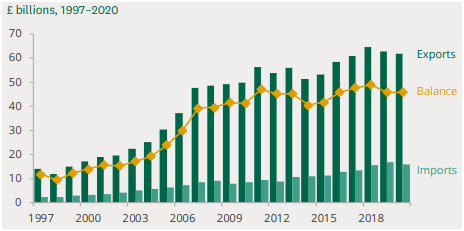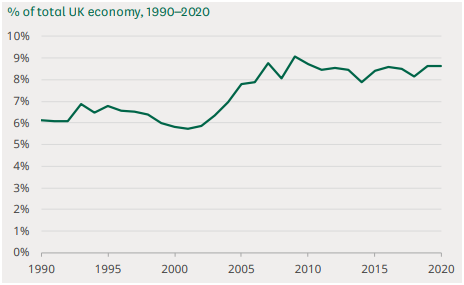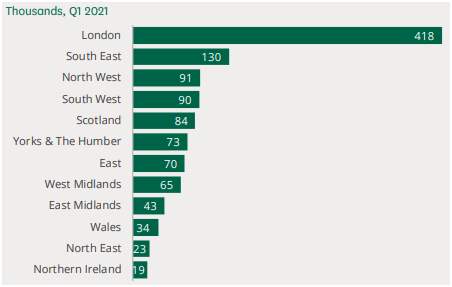Marketing Assignment Examining Business Environment Of Percent
Question
Task: The main aim of this marketing assignmentis for you to conduct intelligence research of internal and external actors and forces that are influential to the Industry Partner (refer to Canvas Assessments page) and its industry/market. You will then need to present preliminary ideas of strategy that can help the Industry Partner to grow. You will need to apply several marketing activities taught in the course to conduct such research and propose the preliminary strategy for the Industry Partner to consider. By applying your knowledge to a live marketing problem presented by the Industry Partner, you will be able to demonstrate your understanding of the theories from the course and justify your proposed growth strategies.
Assessment details
In this assessment you are required to conduct research to gather publicly available information about the Industry Partner’s internal situation and external factors/trends that are currently taking place in the market/industry, where the Industry Partner is operating. You will need to refer to this same Industry Partner for all the assessments in this course.
Market intelligence is positioned within the situation analysis, which is the first part of a marketing plan where external market influences and internal organisational resources and capabilities are assessed, in order to inform marketing opportunities for the organisation.
You will need to summarise your external and internal analysis in a form of SWOT analysis. Based on your SWOT analysis, you will generate some growth strategies for the Industry Partner using TOWS analysis and an Ansoff matrix.
Answer
Introduction
Financial service sector in UK has been the third largest in OECD in 2020 for its proportion in national economic output. In 2020, financial services sector has contributed almost £165 billion to the UK’s economy which is approximately 9% of overall economic output (Hutton and Shalchi, 2021). In such a business context, Percent is making the process easy for clients to build offsetting and providing all essentialities for effective business performance. Percent is developing new era wherein charitable goodness could be developed in all transactions to support causes on local and global level (poweredbypercent.com, 2022). In this report, business environment of Percent, both internal and external has been critically assessed.
Section 1: External Analysis
Record growth in FinTech industry has been witnessed to accelerate in UK in between 2011 and 2016 wherein numerous enterprises grew around 20% year on year. Total investment in FinTech enterprises in UK market varied during the tenure under observation whereby reached the valuation of approximately $25 billion during 2021(Norrestad, 2022). However, the highest has been recorded in 2019 with close to $51 billion.
PESTLE Analysis
Analysis of external business environment of Percent under the lens of PESTLE framework will provide a thorough overview of external factors affecting financial service sector.
|
Political |
Developing regulatory and supervisory ecosystem constructive to Percent’s activities and promotion of innovations in financial service systems is the key strategic direction of UK government. Security and privacy glitches arising from technological progression entails that in financial sector, cyber-attacks are most common, which makes government bring in political changes. Financial technology industry is successfully addressing inevitabilities of clients which are bringing in positive influence on public that is in turn conducive to nation’s image. In 2020, overall exportations of financial services to the European Unionhas been valued with over £20 billion that is almost 35% of all UK financial service exportation, whereas imports from European Unionhas beenvalued atapproximately £5 billion that is around 30% of UK importation of financial services.
Figure 1: Trading of the UK in Financial Service Industry (Source: Hutton and Shalchi, 2021) |
|
Economic |
Huge investments and contracts are made in financial service sector. Local FinTech enterprises are becoming global because of government subsidies. FinTech companies are significantly investing in new financial services which are replacing present payroll system.
Figure 2: Economic Output of Financial Services in the UK (Source: Hutton and Shalchi, 2021) |
|
Social |
As an outcome of mergers and acquisitions transactions that considerably upsurge between FinTech companies and banks, the culture of prosperous enterprises and start-ups never coincide. Customers’ anticipations created need for bringing in pioneering products and services in financial business context. Society is having more confidence in FinTech enterprises than conventional institutions for well service quality, easy accessibility and service diversity. Supply of new employments in the financial service industry is significantly increasing parallel to demand.
Figure 3: Employments in Financial Services in UK by Region (Source: Hutton and Shalchi, 2021)
|
|
Technological |
Large investment in Research and Development has prominently brought in substantial changes in FinTech sector. The user interfaces are overused depending on necessities of enterprises rather than requirements of customers. Present financial services are mostly relevant to micro/P2P/P2B lending, payments, crowd investing, crowd funding, personal finance management and online commerce. |
|
Environmental |
Development of FinTech affords positive influence on environment because services causing environmental pollution are switched by introduction of new ones. As number of financial institutions is increasing in FinTech sector, service quality is progressing swiftly and correcting gaps, therefore taking control on niche market spaces. |
|
Legal |
Tightening of regulations has created necessity for flexibility in systems. Trends in digitalisation of financial service sector necessitate advanced authentication and hence secure access tools and adaptation of biometric data. |
Customer Behaviour Insights
Customers are highly willing to use FinTech services in accordance to their benefits as well as risks however, Razzaqueet al. (2020), recognised that perceived benefits are having biggerinfluence rather than perceived risks in relevance to customer choices. In regards to the relations of Percentand customer retention this has been pointed that services in relevance to payments, compliance and advisory of thisFinTechfirm is having intense influence on the retention ofcustomers however services in relevance to lending is having no such significant impact over customer retention. Further, customer confidence on conventional institutions is on the verge of steep declination because of high pricing, sluggishness, crunch of credit, pitiablelevel of customer service, deficiency of convenient mobile application, lack of perfect user experience (UI/UX) and lack of transparency (Anand and Mantrala, 2019). With expertise Percent is aggressively gaining customer confidence at relatively low cost, making an entry into market spaces worldwide and becoming fully part of this.
Section 2: Internal Analysis
Brand Purpose
Percent has been a for-purpose and for-profit enterprise which is focused on providing essential platform, software and infrastructural solutions that facilitates client firms in closing gaps in relevance to raising awareness and business purpose with their stakeholders and customers. Percent is more intended to enable doing well in all financial transaction. The brand’s business purpose is working with client companies for providing bespoke as well as preferred techniques for achieving their business objectives. Percent’s rudimentary belief is that in future all financial transaction would be having environmental as well as societal value that is developed within its business purpose (poweredbypercent.com, 2022). In precise, the brand has set out for powering purpose in all business worldwide.
Value Proposition
Atan early stage of valuation of anyFinTechfirm this is seemed to be more an 'art form', which is focused on vision, promise, market size, subjective judgment and dreams. However, as the business progresses all the way through its life, such firms then become increasingly more scientific as well as data oriented on revenue, market share and cash flows.In order to keep the promises to their customers, Percent is utilising capability ofDiscrete Choice Modelling (DCM) techniques implanted in framing circumstances and hence infusing processes from econometric modelling and behaviour economics. Unlike most FinTech firms’ value proposition,as discussed by Elias (2020), to help customers performing activities such as paying bills, buying airtime and transferring money, Percent’s discrete choice analysis is presenting customers trade-offs amongst competing services or products. Percent is proposing enough value to customers as DCM is working on such idea that all essential transactions implicate choice including trade-offs among features, price, advertising, brand etc.
Through DCM model, business prospect of Percent is proposing value to clients in optimising the possibilities that customers with given profiles of purchasing or not purchasing products with some specific configurations in competitive market spaces. The brand is also providing estimations of marginal utilities. FinTech enterprises rely on various value propositions to clients that are focused on fast, clear and timesaving experience. Certainly, they intend major innovations in processes and products. FinTechfirmsposition client at the centre of all their attention in which clients are always considered as their topmost priority (Miguel and Duval, 2019). Hence, the strategic choices offered by Percent would definitely upsurge shopping preference of customers.In terms of resources, the Company is having industry-best professionals who are dedicated in giving their best performance. In addition, Percent has collaborated with Google, Asana, Atlassian, Turo, Deliveroo etc. Percent is having capability of vetting, validating and authenticating non-profits. The value propositions as well as the customer experience aresignificantly driven by consumer itself and thanks to their upsurge in knowledge about technologies. As opined by Mamonov (2021), focusing on core value proposition, FinTech firms offers a substantially wide spectrum of financial services, which are prominently enabledwith software tools. However, value proposition strategy of Percent entails that the charitable giving could be witnessed as the most effective technique in order toupsurge customer demand and in the concurrent time an offensive competitive strategic choice that is robust enough to weaken rivals as well as capture overall market share.
Section 3: Summary of External and Internal Analysis
SWOT Analysis
Application of SWOT framework will opportune in identifying strengths and opportunities such that Percent can capitalise of weaknesses and mitigate threats in most tactical way.
|
Strengths |
Weaknesses |
Opportunities |
Threats |
|
1. Excellent quality and cost effective service 2. Control client firms 3. Easy accessibility, transparency and openness in services 4. Effective HR control standards 5. HR perfectly upheld management policies 6. Sensation of togetherness 7. Strong monetary capital |
1. Lack of data privacyas system is not optimised 2. Huge risk as HR is not yet competent 3. Minimal regulatory rigor 4. Limitations in network (Cindy, Mohammad and Teguh, 2019) |
1. Technological advancement utilizeblockchainopportunities 2. Increasing public awareness for easy accessibility to official financial systems 3. Economic changes makes decreasing price pattern of services delivered 4. Excess liquidity is growing popularity of digital technologies and mobile devices 5. Attractive labour market 6. Symbiosis with banking industry |
1. Unfavourable rules and regulation 2. FinTech services abuse due to difficult changing mind-set 3. Security as well as political circumstances 4. Data protection failure and cyber hacking
|
Section 4: Ideation
TOWS Analysis
|
Strength-Opportunity Strategies With engaging extensive industry-best professionals, Percent necessitates driving strategic focus on proper optimisation of data accessibility in financial service sector (S4, S5, O1 and O2). The Company must upsurge the accessibility as well as diversity of financial products and services (S1, S3, O2 and O5). |
Weakness-Opportunity Strategies Building digital competencies is at prior required for Percent. In due process strong collaboration with Google, Asana,Atlassian, Turoand Deliveroowould be effective(W1, W2, W4, O1 and O2). Perfect exploitation of FinTech with the intention of expanding accessibility to financial services (W4, O1, O2, O3 and O6). Percent must engage in restructuringoverall training program (W2 andO1). |
|
Strength-Threat Strategies This is essential for Percent to develop more competitive in addition to efficient client base capacity building (S1, S2, S3, T1 T2 and T3). Through high competency of vetting, validating and authenticating organisations worldwide, enhancement of financial services customer experience with Percent platform, software and infrastructural solutionsis inevitable (S5, T2 and T4). |
Weakness-Threat Strategies With involvement of expert human resources Percent must be driving focus on improvements in telecommunication infrastructure (W1, W4 and T2). |
Strength-Opportunity Strategies
With engaging extensive industry-best professionals, Percent necessitates driving strategic focus on proper optimisation of data accessibility in financial service sector (S4, S5, O1 and O2).
The Company must upsurge the accessibility as well as diversity of financial products and services (S1, S3, O2 and O5).
Weakness-Opportunity Strategies
Building digital competencies is at prior required for Percent. In due process strong collaboration with Google, Asana,Atlassian, Turoand Deliveroowould be effective(W1, W2, W4, O1 and O2).
Perfect exploitation of FinTech with the intention of expanding accessibility to financial services (W4, O1, O2, O3 and O6).
Percent must engage in restructuringoverall training program (W2 andO1).
Strength-Threat Strategies
This is essential for Percent to develop more competitive in addition to efficient client base capacity building (S1, S2, S3, T1 T2 and T3).
Through high competency of vetting, validating and authenticating organisations worldwide, enhancement of financial services customer experience with Percent platform, software and infrastructural solutionsis inevitable (S5, T2 and T4).
Weakness-Threat Strategies
With involvement of expert human resources Percent must be driving focus on improvements in telecommunication infrastructure (W1, W4 and T2).
Ansoff Matrix
Implementation of Ansoff matrix would deliver profound insight into high-level strategic choices available for Percent.
Market Penetration-Market penetration is tactic of increasing sales in already existing marketplaces with promotion of existing products.Percent can accomplish this with offering existing customers with different services for motivating them to give a try. This would secure market dominance. Augmented promotions can be extremely helpful in this context.
Market Development-Percent is having opportunity for market development in various ways. Firstly, the brand can enter in new geographic marketplaces. Secondly, the Company can bring in innovative products with aim of creating appeal to target audience in existing markets.
Product Development-This strategy facilitates promoting new product line in pre-existing market spaces (Cleberg, 2019). With intense capability of technological innovation and DCM, promotion of new products in existing market would be perfect strategic choice.
Diversification-Percent is having the competency of horizontal diversification in various financial segments for creating diversity. However, vertical diversification is unnecessary as Percent is already having different services for investors.
Conclusion
While drawing the inferences this is earnest to notify that Percent is having all the essential resources and competencies to thrive successfully in financial service sector. However, the brand is lacking strategic direction. This is recommended for Percent to drive focus on market development and market penetration which would significantly opportune the brand in reaching new heights in FinTech industry.
List of References
Anand, D. and Mantrala, M., 2019.Responding to disruptive business model innovations: the case of traditional banks facing fintech entrants. Journal of Banking and Financial Technology, 3(1), pp.19-31.https://www.researchgate.net/profile/Murali-Mantrala/publication/329905785_Responding_to_Disruptive_Business_Model_Innovations_The_Case_
of_Traditional_Banks_Facing_Fintech_Entrants_Prepared_for_Journal_of_Banking_and_Financial_
Technology/links/5c21db6f92851c22a34445f2/Responding-to-Disruptive-Business-Model-Innovations-
The-Case-of-Traditional-Banks-Facing-Fintech-Entrants-Prepared-for-Journal-of-Banking-and-Financial-
Technology.pdf
Cindy, S., Mohammad, B.L. and Teguh, S.I., 2019.Banking and financial technology (fintech) Islamic integration with collaborative models. Russian Journal of Agricultural and Socio-Economic Sciences, 91(7).https://cyberleninka.ru/article/n/banking-and-financial-technology-fintech-islamic-integration-with-collaborative-models Cleberg, C., 2019. Strategic Success: The Ansoff Matrix vs. The Balanced Scorecard.https://digitalcommons.unl.edu/cgi/viewcontent.cgiarticle=1192&context=honorstheses
Elias, M., 2020. Fintech's Value Proposition - Tekedia.Marketing assignment[online] Tekedia. Available at:
Hutton, G. and Shalchi, A., 2021. [online] Researchbriefings.files.parliament.uk. Available at:
Mamonov, S., 2021. The role of information technology in fintech innovation: insights from the europeanfintech ecosystem.https://scholarspace.manoa.hawaii.edu/bitstream/10125/71230/1/0494.pdf Miguel, A.F. and Duval, L., 2019.Fintech and the socialization of the financial industry. Fintech and the socialization of the financial industry, (9), pp.35-45.https://repositorio.iscte-iul.pt/bitstream/10071/20085/1/fintech.pdf
Norrestad, F., 2022. Fintech: total investment UK 2021 | Statista. [online] Statista. Available at:
Razzaque, A., Cummings, R.T., Karolak, M. and Hamdan, A., 2020. The propensity to use FinTech: input from bankers in the Kingdom of Bahrain. Journal of Information & Knowledge Management, 19(01), p.2040025.https://www.researchgate.net/profile/Anjum-Razzaque/publication/348118507_Adoption_of_FinTech_by_Students_in_Higher_Education_ Institutions/links/61a9e05929948f41dbbe8669/Adoption-of-FinTech-by-Students-in- Higher-Education-Institutions.pdf















